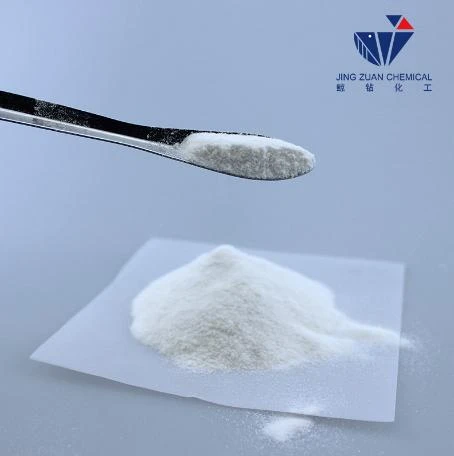
Novemba . 21, 2024 15:10 Back to list
applications of redispersible polymer powder
Applications of Redispersible Polymer Powder
Redispersible polymer powder (RDP) is a versatile material that has gained significant traction in various industries due to its ability to provide enhanced performance properties when mixed with other materials. Primarily composed of polymers that can be easily redispersed in water after being dried, RDP offers unique advantages, particularly in construction, coatings, and adhesive applications. This article explores the multifaceted applications of redispersible polymer powder and its impact on product performance and sustainability.
1. Construction Industry
One of the most significant applications of RDP is in the construction sector, particularly in the formulation of cementitious and gypsum-based products. When added to mortar and tile adhesives, RDP enhances workability, adhesion, and flexibility. The ability of RDP to improve the bonding strength allows for the use of thinner layers of materials, which not only increases efficiency but also reduces overall material costs.
For instance, RDP is frequently used in exterior insulation and finish systems (EIFS). These systems benefit from RDP's water resistance and improved flexibility, which help to prevent cracking and promote longer lifespan in exterior applications. Additionally, RDP contributes to the elasticity of the mortar, allowing it to better absorb vibrations and movements without compromising integrity.
2. Coatings
In the coatings industry, RDP is pivotal in formulating water-based paints and coatings. The addition of RDP improves the film formation, durability, and aesthetic properties of the final product. RDP allows for better adhesion to various substrates, leading to improved scratch resistance and durability of the paint finish.
Moreover, RDP is instrumental in enhancing the scrub resistance of coatings, which is crucial in environments subjected to regular cleaning or wear, such as hospitals or commercial kitchens. The incorporation of redispersible polymer powder also allows for the development of eco-friendly, low-VOC (Volatile Organic Compounds) formulations, aligning with the industry's ongoing commitment to sustainability.
3. Adhesives
applications of redispersible polymer powder

The adhesive industry benefits greatly from the use of redispersible polymer powders. When incorporated into glue formulations, RDP enhances the tackiness and bonding strength, which is especially important for applications ranging from construction adhesives to woodworking glues. RDP provides the needed flexibility, allowing the adhesive to maintain strong bonds even under stress or movement of the adhered materials.
RDP is also used in engineered wood products, such as particleboard and similar composites, where it improves both adhesion and water resistance. The combination of RDP with traditional adhesive systems enables manufacturers to create products that perform better under varying environmental conditions.
4. Environmental Benefits
Beyond performance enhancements, one of the critical advantages of using redispersible polymer powders is their environmental impact. RDP allows for the formulation of products with lower levels of solvents and VOCs, contributing to healthier indoor air quality and reduced environmental pollution. Furthermore, the ability to produce high-performance products with lower material quantities leads to less waste and a smaller carbon footprint overall.
5. Future Directions
As innovation continues to drive the construction materials and coatings industries, the demand for redispersible polymer powders is expected to grow. Advances in polymer chemistry are paving the way for new types of RDP that offer even more enhanced properties, such as improved thermal stability or specifically tailored adhesion characteristics for niche applications.
The increasing emphasis on sustainable building materials is likely to further accelerate the adoption of RDP, as manufacturers seek to fulfill regulatory requirements and consumer preferences for eco-friendly products. Additionally, the ongoing trend toward the development of multifunctional materials will open new avenues for RDP application across different sectors.
Conclusion
In conclusion, redispersible polymer powder is a game-changer in various fields, particularly in construction, coatings, and adhesives. Its ability to enhance product performance while contributing to sustainability makes it a valuable ingredient in modern formulations. As technological advancements continue to evolve, the applications of RDP will undoubtedly expand, positioning it as an essential material for future innovations. Whether in everyday construction projects or specialty coatings, the impact of RDP is profound, promising a more efficient and sustainable future for manufacturing and construction industries alike.
-
Unlocking the Benefits of HPMC Products: A Gateway to Versatile Applications
NewsAug.07,2025
-
Unleashing the Potential of HPMC Ashland: A Comprehensive Look
NewsAug.07,2025
-
Tile Bonding Cellulose: The Key to Superior Adhesion and Durability
NewsAug.07,2025
-
Hydroxypropyl Methylcellulose Powder: The Versatile Component in Modern Pharmaceuticals
NewsAug.07,2025
-
Hydroxyethyl Cellulose: The Versatile Solution for Various Industries
NewsAug.07,2025
-
Hydroxyethyl Cellulose (HEC): The Versatile Polymer for Various Applications
NewsAug.07,2025







